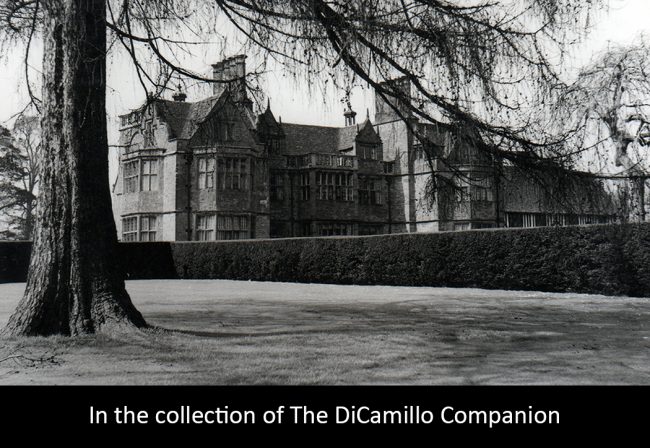
The House from a circa 1912 photograph
House & Family History: Ashby St. Ledgers is mentioned in the Domesday Book as Ascebi, which translates from the Anglo-Saxon as "ash tree settlement." After the Conquest a Norman church was built on the site dedicated to Saint Leodegarius, which was the beginning of the name that became Ashby St. Ledgers in modern English. The Estate was given by William the Conqueror to Hugh de Grandmesnil and, in the 14th century, came into the ownership of the Catesby family. The Catesbys became a noted recusant family, refusing to give up the old Roman Catholic faith, which laid the seeds for the Gunpowder Plot, which was planned here. Under Robert Catesby, Ashby St. Ledgers became the command center for the Plot, which was mapped out in the room above the Gatehouse. Following the failure of the Gunpowder Plot and Catesby's death in 1605, the Estate was confiscated by the crown as forfeited property of a traitor. In 1612 the crown sold Ashby St. Ledgers to Bryan I'Anson (1560-1634), Sheriff of the City of London. The Estate remained the seat of the I'Anson family until 1703, when it was sold to Joseph Ashley. When his great nephew, also called Joseph Ashley, died in 1798, Ashby St. Ledgers was inherited by his daughter, Mary, wife of Sir Joseph Senhouse. Their daughter, Elizabeth, married Joseph Pocklington in 1835, and the Estate remained in their family until 1903, when it was sold to Ivor Guest, 1st Viscount Wimborne. In the late 20th century the Estate was purchased by the British Airways Pension Fund; they were poor custodians of the House and ultimately split the House from the Estate and sold each off separately: the Estate was sold in 1982 to the Baker family, while Ivor Guest, 3rd Viscount Wimborne, eventually ended up purchasing the House in 1998 (after it had passed through a serious of owners) in an attempt to save it from ruination.
Garden & Outbuildings: In 2005 the Crown Estate purchased the 2,337-acre Ashby St. Ledgers Estate from the Baker family, but not the House or the gardens that surround it, which remains in the ownership of Lord Wimborne. The Crown Estate has stated that they plan to continue to run the Estate as an agricultural business, which includes the organic dairy farm, the Chapel Farm, and a country sports center.
Country Life: CX, 274, 348 plan, 420 plan, 1951.
House Listed: Grade II*
Park Listed: Grade II
Current Seat / Home of: Ivor Guest, 3rd Viscount Wimborne.
Past Seat / Home of: Hugh de Grandmesnil, 11th century. Catesby family, 1375-1605. I'Anson family, 1612-1703. Ashley family, 1703-98. Sir Joseph Senhouse, 19th century. Pocklington family, 1835-1903.
Current Ownership Type: Individual / Family Trust
Primary Current Ownership Use: Private Home
Ownership Details: Ownership is split; the House is owned by Ivor Guest, 3rd Viscount Wimborne, while the Estate is owned by The Crown Estate.
House Open to Public: No
Historic Houses Member: No